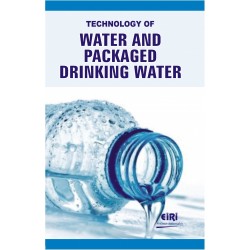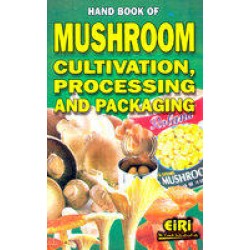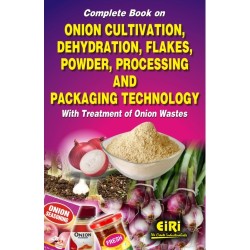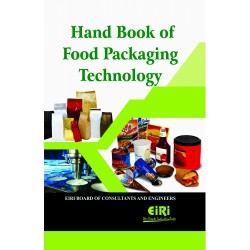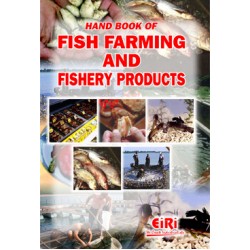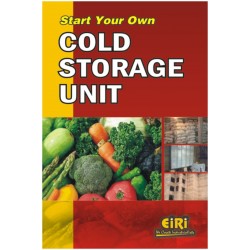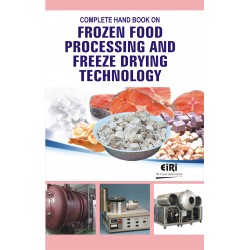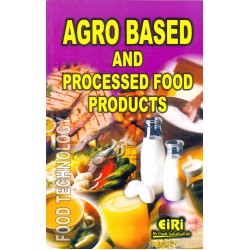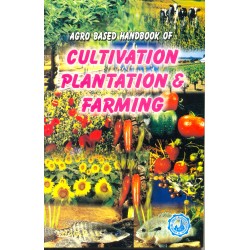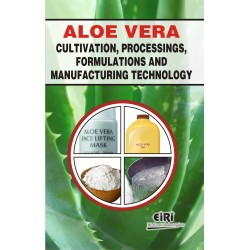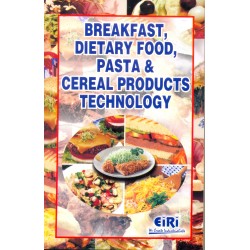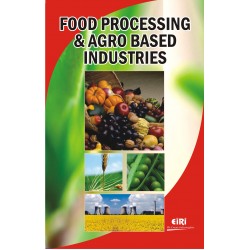technology of oilseeds processing, oils & fats and refining (hand book)
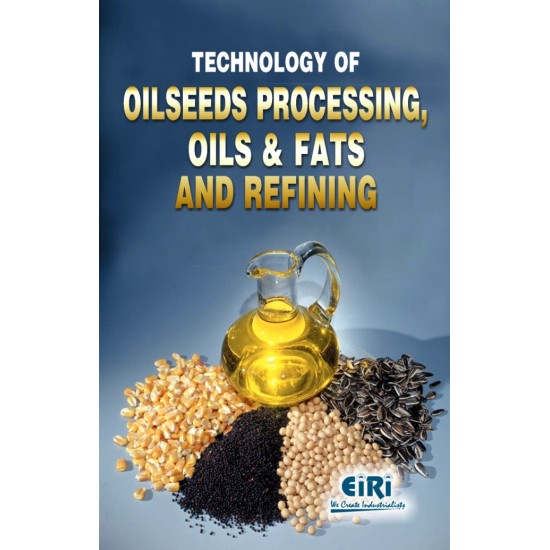
- More than 40 years of experience
- Managed by expert industrial consultants
- ISO 9001-2015 Certified
- Registered under MSME, UAM No: DL01E0012000
- 24/5 Research Support
Get your quesries resolved from an industry expert. Ask your queries before report or book purchase. - Custom Research Service
Speak to the our consultant to design an exclusive study to serve your research needs. - Quality Assurance
All reports are prepared by highly qualified consultants & verified by a panel of experts. - Information Security
Your personal & confidential information is safe & secure.
TECHNOLOGY OF OILSEEDS PROCESSING, OILS & FATS AND REFINING contains:
Chemical Constituents
of Fats
- Fatty acids
- Rules of Nomenclature
- Numbering
- Nomenclature
- Symbols
- Saturated Acids
- Acids with an even number of carbon atoms
- Acids with an odd number of carbon atoms
- Branched chain acids
- Monoenic acids
- Monoenic acids: ethylene bond at 9
- Monoenic acids: ethylene
- bond at n – 9
- Position isomers of oleic acid
- Monoenic acids: trans ethylene bond
- Monoenic acids: terminal ethylene bond
- Polyenic Acids
- Other Polyunsaturated Acids
- Acids with conjugated
- ethylene bonds
- Cyclic Acids
- Cyclopropenic Acids
- Cyclopentenic Acids
- Semisynthesized Cyclic
- Acids
- Acids with Secondary Groups
- Hydroxy Acids
- Epoxy Acids and Ketoacids
- Fatty Acid Distribution
- Glycerides
- Overview
- Stereospecific numbering
- and nomenclature
- Partial Glycerides
- Single-acid diglycerides
- Diglycerides with two fatty acids
- Triglycerides
- Glyceride Structure
- Glyceride Composition
- Glyceride Distribution
- Hypothesis and Distribution Laws
- Minor Constituents
- Phosphatides
- Phosphatidic Acids
- Phosphatidyl Amino Alcohols
- Phosphatidyl Polyols
- Phosphoglyceride Fatty Acids
- Sphingolipids
- Glucolipids
- Monogalactosyl diglyceride Cerides
- Unsaponifiable Matter
- Triterpenes and their Derivatives
- Fat-Soluble Vitamins
- Vitamin E, Tocopherols and Tocotrienols
- Forms of Vitamin A
- Forms of Vitamin D
- Fatty Alcohols
- Hydrocarbons
- Aliphatic Hydrocarbons
- Terpenic Hydrocarbons
- Carotenes and Carotenoids
- Other Constituents
- Chlorophylls and their Derivatives
Oleaginous Seeds
and their Oils
- Oil Composition
- Oleic Sunflower
- Rapeseed and mustard
- Rapeseed and Mustard Species
- Rapeseed or Mustard Plant
- Agronomy of Rapeseed and Mustard
- Genetic Improvements
- Rapeseed and Mustard Seed
- Fatty Acids of Rapeseed and Mustard Oils
- Unsaponifiable Fraction of Rapeseed Oil
- SOYBEAN
- Plant
- Seed
- Composition of Soybean Oil
- Corn and Grapeseeds
- Corn
- Botany, Crop Growing, Production
- Technology
- Oil
- Physicochemical Characteristics
- Triglyceride Composition
- Fatty Acid Composition
- Composition of Unsaponifiable Fraction
- Grapeseeds
- Botany, Growing, Production
- Technology
- Grapeseed Oil
- Physicochemical Characteristics
- Triglyceride Composition
- Fatty Acid Composition
- Composition of Unsaponifiable Fraction
- Safflower, sesame, Camelina, poppy seed oil
- Safflower
- Botany, Growing, Production Technology
- Safflower Oil
- Physicochemical Characteristics
- Fatty Acid Composition
- Composition of Unsaponifiable Fraction
- Sesame
- Botany, Growing, Production
- Technology
- Sesame Oil
- Physicochemical Characteristics
- Fatty Acid Composition
- Composition of Unsaponifiable Fraction
- Camelina
- Botany, Growing, Production
- Camelina Oil
- Physicochemical Characteristics
- Fatty Acid Composition
- Unsaponifiable Fraction
- Poppy Seed Oil
- Botany, Growing, Production
- Poppy Seed Oil
- Physicochemical Characteristics
- Triglyceride Composition
- Fatty Acid Composition
- Unsaponifiable Fraction
- Oleaginous Flax
- Seed
- Oil Composition
- Almond, Hazelnut, Walnut
- Almond
- Botany, Growing, Production
- Almond Oil
- Physicochemical Characteristics
- Composition of Triglycerides
- Fatty Acid Composition
- Composition of Unsaponifiable Fraction
- Hazelnut
- Botany, Growing, Production
- Technology
- Hazelnut Oil
- Physicochemical Characteristics
- Triglyceride Composition
- Fatty Acid Composition
- Composition of Unsaponifiable Fraction
- Walnut
- Botany, Growing, Production
- Technology
- Walnut Oil
- Physicochemical Characteristics
- Fatty Acid Composition
- Composition of Unsaponifiable Fraction
- Evening Primrose, Borage, And Blackcurrant Seeds
- Overview
- Evening Primrose
- Botany and Genetics of Primrose
- The Œnothera genus
- Evening Primrose Seed
- Upgrading of the Evening Primrose for Production
- of g-Ln
- Evening Primrose Oil
- Borage
- Seed
- Some Agronomical Data
- Borage Oil
- "Virgin" Oil or "Refined" Oil ?
- Main Uses of Borage Oil
- Blackcurrant Seeds
- Botany
- Blackcurrant Seed Oil
- Main Uses of Blackcurrant Seed Oil
- Competing
- Biotechnologies
Olive and Olive Oil
- The Olive and its tree
- Composition and characteristics of olive oil
- Triglyceride composition
- Fatty Acid Distribution in Internal and External Positions
- Fatty Acid Composition
- Unsaponifiable Matters
- Contaminants
- Quality and specifications:
- The International COI Standard
Palm Oil and its Fractions
- The plant
- Botany
- Crop growing techniques
- Ecology & Growing Area
- Yields and Production
- Palm oil
- Characteristics and Chemical Composition
- Utilization
Animal Fat
- Fat rendering industry land animal
- Raw Material
- Source
- Characteristics
- Collecting Fat
- Rendering Process Principle
- Batch dry Rendering System
- Continuous Wet Rendering System
- Continuous Dry Rendering System
- Materials
- Metal Elimination
- Cookers
- Pre-heaters
- Dryers
- Separators
- Bone fat extraction
- Choice of a rendering process
Technology of Refining of Fats
- Minor Components and Contaminants to be Eliminated
- Free Fatty Acids
- Partial Glycerides
- Phospholipids
- Colouring Agents
- Free Sugars, Glycolipids
- Hydrocarbons, Resins
- Sterols
- Tocopherols
- Waxes
- Metal Compounds
- Flavours
- Naturally Food-Borne Toxic Substances
- Substances of External Origin
- Receiving and Storing Crude Oils
- Quality Control before Unloading
- Crude Oil Warehousing
- Determining Quantities, Gaugings
- Classical Chemical Refining
- Eliminating Phospholipids
- Caustic Soda Neutralization
- Waterwashing
- Drying
- Quality Control of Neutral Oil
- Acidity
- Moisture Content
- Phosphorous
- Soap
- Neutralization Equipment Technology: Pumps, Exchangers, Mixers, Contactors
- Feed Pumps
- Dosing Pumps
- Flow-Meters
- Disc Heat-Exchangers
- Spiral Exchangers
- Welded Plate Heat-Exchangers
- "Compablock" Exchangers
- Scraped Surface Heat Exchangers
- Mixers and Contactors
- Neutralization Equipment Technology: Centrifugal Separators
- Different Types of Continuous Centrifugal Separators
- Peripherals of the Centrifugal Separators
- Programming System of the Self-Cleaning Separators
- Theoretical Data Determining the Bowls Characteristics
- Study of Some Equipments
- Cylindrical Bowls Separators
- Westfalia's Separators, Type RTA or OSM with Double Turbine
- Alfa-Laval type SRG separator
- Separators with Self-Cleaning Bowls
- Westfalia's Type RSA Self-Cleaning
- Separators
- Alfa-Laval Type SRPX
- Self-cleaning Separators
- Bowls Cleaning,
- Starting up and Ending Procedures
- Self-cleaning Bowls
- Dismantling the Bowls
- Reassembling the Bowls
- Starting and Stopping a Centrifuge
- Neutralization Loss
- Determining Neutralization
- Loss Using an Inventory Balance
- Determination Using Loss Control
- Determining Neutralization Loss with Chemical Methods
- Bleaching
- The Absoption Phenomenon
- Bleaching Agents
- Bleaching Clays
- Activated Carbon
- Side Effects of Bleaching Agents
- "Trisyl" and other Similar Products
- Bleaching Monitoring
- Filtration and filters
- Porous Walls
- Filters: Process and Technology
- Example of a Metallic Cloth Filter: Niagara Filter
- Example of a Metal Mesh Filter:
- Funda Filter
- Example of a Metal Mesh Filter: Bernardini Filter
- Plugging of Metal Filters
- Safety Filters
- Filters Using Paper Filtering Discs: Filter Presses
- Filters Using Filtration Discs: Bubble Cap Filters
- Filtration Quality Control - Computerizing the Process
- Control with a Filtration Test
- Control with a Turbidity Measure
- Monitek Turbidity Instrument
- APV-Bowser Turbidity Instrument
- De-Oiling Spent Earth
- Analyses to be Carried Out on Bleached Oil
- Dewaxing Vegetable Oils
- Waxes & their Measuring
- Dewaxing by Filtration
- Dewaxing by Centrifugation, Double Purification
- Pre-Dewaxing by Chilling and Centrifugating after Neutralization
- Pre-Dewaxing by Chilling and Centrifugating after Partial Neutralization
- Pre-Dewaxing by Cold Degumming
- Eliminating Spent Earths
- "Demargarination" of Selectively Hydrogenized Oils
- Prechilling Peanut Oils
- Deodorization
- Flavour and Odour Releasing Substances
- Substances Characterizing Non-Alterated Oil
- Substances Produced by Oil Degradation
- Basic Principles of Deodorization
- Influence of Various Parameters
- Amount of Steam Injected
- Influence of Temperature
- Influence of the Duration of the Operation
- Influence of Pressure
- Influence of the Way Cooling is Conducted
- Loss During Deodorization
- Inevitable Loss
- Other Loss
- Product Quality
- Deodorization Equipment
- Example of a Semicontinuous Deodorizer
- Example of a Continuous Deodorizer
- Semicontinuous Deodorizer with Continuous Inlet and Outlet
- Thin Film Deodorization
- Saturation with Nitrogen
- Pollution and Nuisance Due to Deodorization
- Physical Refining
- Basic Principles
- Superdegumming
- treating the by-products
- Soapstocks
- Earths From Bleaching
- Earths from Dewaxing
- Deodorization By-products
- Waste Water Treatment
Hydrogenation Technology
- Diagrammatic Principle of Hydrogenation
- Hydrogen
- Catalysts
- Different Types of Catalysts
- Catalyst Poisons
- Fats and Oils to be Hydrogenated
- Hydrogenation Equipment
- Discontinuous or Vat Process
- DEAD-END System
- Continuous Hydrogenation
- Comparison with Discontinuous Processes
- Principle of Continuous Process
- Equipment Models
- Separation of Catalyst & Operations
- Filtration Conditions
- Filtration Apparatus
- Handling of Catalyst
- General Layout of an Installation
- Improvement in Hydrogenation Techniques
- New Stirring Techniques
- BUSS Loop Reactor
- Helicoidal L.M. LITZ
- Mechanism
- Other Hydrogenation Techniques
- Improvement in Energy Yield
- Control of Reaction
- Process Control
- Controlling the End of
- Reaction (End Point)
- Control of Finished Product
- Characteristics of Some Hydrogenated Oils
- Safety Problems
- Hydrogen-Related Problems
- Problems in Handling of Catalyst
- Problems of Installation Safety
Fractionation Technology
- Fractionation of palm oil
- Fractionation of lightly hydrogenated lard or tallow
- Fractionation of Hydrogenated Oils
- Dewaxing of Sunflower Oil
- Different Methods of Fractionation
- Chromatography
- Fractionated Crystallization
- Liquid/liquid Extraction
- Fractionated Crystallization
- Principle and Method
- Some Theoretical Considerations on Crystallization Technology
- Heat transfer between
- Rate of nuclei diffusion
- Effect of Temperature Gradient (At)
- Effect of the Surface (S) of Transfer
- Effect of Viscosity
- Dry Fractionation
- Principle
- The TIRTIAUX Process
- Fractionation in Solvent
- Phase
- Principle
- Operating Conditions
- Installation of Fractionation by Solvent
- Fractionation in Presence of Detergent (Lanza process)
- Principle
- Operating Conditions
- Installation Using LANZA Process
- Brief Comparison of the Three Processes
- Liquid/Liquid Fractionation
- Freeman Rule
Margarine Technology
- General Production
- Principles
- Importance of Crystallization
- Polymorphism
- Mixed Crystals
- Dimension and Form of Crystals
- Importance of Rate of Solid
- Does the Aqueous Phase and Ingredients Have a Role to Play?
- General Production Pattern
- Vegetable Oils and Fats
- Animal Oils
- Formulation of Fatty Phases
- Equivalent of Rates of Solids
- Introduction of Data of Crystallization
- Problems Linked to Hardness
- Evaluation of Margarine for Pastry
- Elasticity and Spread
- Taste of Margarines
- Melting Speed
- Sensation of "freshness "
- Sensation of "thickness"
- Oil Exudation
- Characteristics of the Fatty Phase
- Production Additives and Auxiliaries
- Ingredients Soluble in the Fatty Phase
- Emulsifying Agent
- Monoglycerides of Fatty Acids
- Colouring agents
- Aromas Soluble in Fatty Phase
- Liposoluble Vitamins
- Ingredients Soluble in Aqueous Phase
- Water
- Milk
- Salt
- Preservatives
- pH Regulators
- Antioxidants
- Emulsion Preparation
- Preparation of the Fatty
- Phase
- Preparation of Aqueous
- Phase
- Water and Brine
- Sugar
- Matured Milk
- Acidity Regulator
- Final Emulsion
- Diverse Processes of Manufacture
- Semi-Continuous
- Processes or Proces-
- ses on Drum
- The Traditional Processes Represented by the
- System of Tubular
- Cooling and Scraped Surface
- VOTATOR Process
- The Perfector System
- Conditioning
- Quality Control
- Control During Manufacture
- Control of the Fat Phase
- Salt and Sugar
- Testing the Finished
- Product
- Testing the Water Content
- Testing Weight of Bricks
- Salt Content
- Content of Air and Occluded Gases
- pH Measurement
- Measurement of Hardness
- Other Tests
- Organoleptic Quality
- Bacteriological Control
- Packaging Checks
- Oil Emulsions in Water
- Emulsions
- Physical Stability
- Sedimentation or Creaming
- Floculation or Coagulation
- Coalescence or Rupture of Emulsion
- Bacteriological Stability
- Organoleptic Stability
- Mayonnaise
- Definition
- Raw Materials Used
- Oil
- Egg yolk
- Mustard
- Vinegar
- Other Ingredients
- Additives and Aromas
- Formulation
- Production
- Discontinuous Production
- Quality Control
- Mayonnaise
- Raw Materials
- Packaging
- Sauces
- Variety Sauces
- Bearnaise Sauce
- Tartar Sauce
- Burgundy Sauce
- Ailloli Sauce
- Salad Sauces
- Vinegar
Production of Neat Soap with 63% Fatty Acids
- Saponification Reaction
- Batch Process
- Equipment
- Saponification
- Washing
- Fitting
- Continuous Processes
- Sharples Process
- Monsavon Process
- Alfa-Laval Process
- Saponification
- Mazzoni Process
- Washing cycles
- Latest Developments in Processes
- Other Processes
- Soap from Fatty Acids
- Methyl Ester Soap
- Miscellaneous Processes
- Drying and Finishing of Soap
- Drying of Household Soaps
- Drying of Toilet Soap
- Finishing of Toilet Soap
- Wrapping and Packaging
- Glycerine Recovery
- Lye Processing
- Concentration
- Distillation
- Bleaching
Oilseed Processing Technology
- Importance of fats and oils
- Availability of edible oils
- Traditional oil processing
- Ghani technology
- Crushing oilseeds
- Oil yield
- Evolution of oil
- processing
- Advantages and disadvantages of ghani crushing
- Authenticity of edible oils
- Olive oil
- Purity criteria
- Free Fatty Acid
- Content (FFA)
- Peroxide Value (PV)
- Specific Extinction (SE)
- Fatty Acid Composition
- Sterol Composition
- Codex standards to combat fraud
- Future developments
- Recommendations on
- Fats and Oils in Human Nutrition
- Minimum Desirable
- Intakes for Adults
- Recommendations
- Minimum desirable intakes for infants and young children
- Recommendations
- Upper limits of dietary fat and oil intakes
- Recommendations
- Saturated and unsaturated fatty acids and cholesterol
- Recommendations
- Isomeric fatty acids
- Recommendations
- Substances associated with fats and oils
- Recommendations
- Essential fatty acids
- Recommendations
- Dietary information and programme needs
- Recommendations
The role of dietary fats and oils in human nutrition is one of the most important areas of concern and investigation in the field of nutritional science. The findings of investigations on this subject have wide-ranging implications for consumers, healthcare providers and nutrition educators as well as food producers, processors and distributors. New evidence concerning the benefits and risks associated with particular aspects of dietary fat is constantly emerging in both the scientific literature and the popular media. At times, controversies about these findings emerge. Sifting through all the claims and counterclaims, incomplete and incompatible studies, and biases and competing interests for the elements of truth and a prudent course of action is a challenge. However, such discrimination in essential because changing views about the effects of dietary fats and oils can profoundly influence the consumption of various foods and, ultimately, health and nutritional status, agricultural production, food processing technologies, food marketing practices and nutrition education. Fats are the main source of energy for satisfactory growth and physical activity during early infancy. This energy requirement is not easily met where diets are low in fat (less than 15 per cent of total calories), which partly explains the high prevalence of malnutrition in such areas. Fats should also be considered in terms of their structural function during the first two years of life. They provide the fatty acids and cholesterol needed to form cell membranes in all the organs.
Moreover, important organs such as the retina and the central nervous system are mainly composed of fats. Most of the fats needed to form these tissues are essential fatty acids (EFAs) which cannot be synthesized by the organism and have to be acquired through nutrition. Mother's milk has a special fat composition that makes it unique for goodchild nutrition. It contains factors that facilitate the digestion of fats, while its chemical composition makes it more digestible and includes a balanced supply of n-6 and n-3 fatty acids. Oilseed processing equipment with a daily capacity of less than 50 tons per day typically employs a mechanical extraction process to separate the oil from an oilseed. Mechanical extraction processes apply pressure to separate oil from the meal in an oilseed. A common method for applying mechanical pressure is through a screw press.
Within India there are regional variations in ghani design, which probably arose form the nature of the oilseeds that were regionally available for crushing. The large granite ghanis of southern India have a capacity of 35 to 40 kg, requiring two animals yoked side by side and two operators, one for the animals and the other near the mortar. The load-beam is very long and curved and rides on a strong outer groove on the mortar. These ghanis have a life of four to five years, after which the pit is too worn to be useful. The wooden ghani of western India has a capacity of 8 to 15 kg, has an oil outlet at the base of the pit (which is kept plugged during crushing) and frequently has the operator seated on the load-beam. Margarine is an emulsion of water in oil type (W/O) which include two essential phases: continuous phase: FATTY PHASE dispersed phase: AQUEOUS PHASE It contains also some additives (lecithin, monoglycerides, salt, colouring agent, antioxidant, preservatives, vitamins) distributed partly in the fatty phase (soluble or dispersible in fats) and partly in the aqueous phase (soluble or dispersible in water and/or milk). Emulsion is a liquid system including two immiscible phases, one being finely dispersed in the other. But because of its thermodynamic instability, the emulsion tends to separate for restructuring the two original phases. In the case of margarine, it is therefore necessary to facilitate emulsion and to stabilize that condition. This is the role of emulsifying agents which reduce the quantum of labour for formation of a homogeneous mixture of these two immiscible phases, final stability of the product is obtained by crystallization of the fatty phase in the emulsion.
The complete definition of margarine is thus one of a polydispersed system of fats to solid and liquid states, in water and/ or milk, of ingredients and sometimes of gas bubbles. Mechanical extraction processes have two main elements. The first is seed preparation. Seed preparation methods vary depending on seed characteristics. For example, seed preparation for canola often is limited to seed cleaning while other oilseeds may need to be cleaned, de-hulled, cracked, rolled, and/or flaked. Additional equipment may be required to complete seed preparation. A producer should identify the oilseeds that they are likely to process in order to determine exactly what equipment will be needed.The second element is the removal of oil from the oilseed. In a screw press operation, seed is fed from a hopper into the screw press, which uses pressure to force oil contained in an oilseed through small openings in the side of the press. Meal, that is too large to exit through the small openings is extruded through larger openings at the end of the press. Screw presses are capable of removing approximately 65 percent to 75 percent of the oil contained in an oilseed. Some mechanical presses preheat seed as it enters the press. Preheating increases oil recovery rates to 65 percent to 80 percent. Alternatively, if seed is processed at low temperatures (for example, below freezing) oil recovery rates may be less than 60 percent. Actual recovery rates will depend on press quality, press operation, seed quality, seed type and seed temperature.
The present volume Technology of Oilseeds Processing, Oils & Fats and Refining contains 11 chapters on various aspects of oilseed processing refining, i.e. Chemical Constituents of Fats, Oleaginous Seeds and their Oils, Olive and Olive Oil, Palm Oil and its Fractions, Animal Fat, Technology of Refining of Fats, Hydrogenation Technology, Fractionation Technology, Margarine Technology, Production of Neat Soap with 63% Fatty Acids, Oilseed Processing Technology
How to Make Project Report?
Detailed Project Report (DPR) includes Present Market Position and Expected Future Demand, Technology, Manufacturing Process, Investment Opportunity, Plant Economics and Project Financials. comprehensive analysis from industry covering detailed reporting and evaluates the position of the industry by providing insights to the SWOT analysis of the industry.
Each report include Plant Capacity, requirement of Land & Building, Plant & Machinery, Flow Sheet Diagram, Raw Materials detail with suppliers list, Total Capital Investment along with detailed calculation on Rate of Return, Break-Even Analysis and Profitability Analysis. The report also provides a birds eye view of the global industry with details on projected market size and then progresses to evaluate the industry in detail.
We can prepare detailed project report on any industry as per your requirement.
We can also modify the project capacity and project cost as per your requirement. If you are planning to start a business, contact us today.
Detailed Project Report (DPR) gives you access to decisive data such as:
- Market growth drivers
- Factors limiting market growth
- Current market trends
- Market structure
- Key highlights
Overview of key market forces propelling and restraining market growth:
- Up-to-date analyses of market trends and technological improvements
- Pin-point analyses of market competition dynamics to offer you a competitive edge major competitors
- An array of graphics, BEP analysis of major industry segments
- Detailed analyses of industry trends
- A well-defined technological growth with an impact-analysis
- A clear understanding of the competitive landscape and key product segments
Need Customized Project Report?
- Ask for FREE project related details with our consultant/industry expert.
- Share your specific research requirements for customized project report.
- Request for due diligence and consumer centric studies.
- Still haven't found what you're looking for? Speak to our Custom Research Team
About Engineers India Research Institute:
Our Approach
- Our research reports comprehensively cover Indian markets (can be modified as per your country), present investigation, standpoint and gauge for a time of five years*.
- The market conjectures are produced on the premise of optional research and are cross-accepted through associations with the business players
- We use dependable wellsprings of data and databases. What's more, data from such sources is handled by us and incorporated into the report
Why buy EIRI reports?
- Our project reports include detailed analysis that help to get industry Present Market Position and Expected Future Demand.
- Offer real analysis driving variables for the business and most recent business sector patterns in the business
- This report comprehends the present status of the business by clarifying a complete SWOT examination and investigation of the interest supply circumstance
- Report gives investigation and top to bottom money related correlation of real players/competitors
- The report gives gauges of key parameters which foresees the business execution





















-250x250h.jpg)
